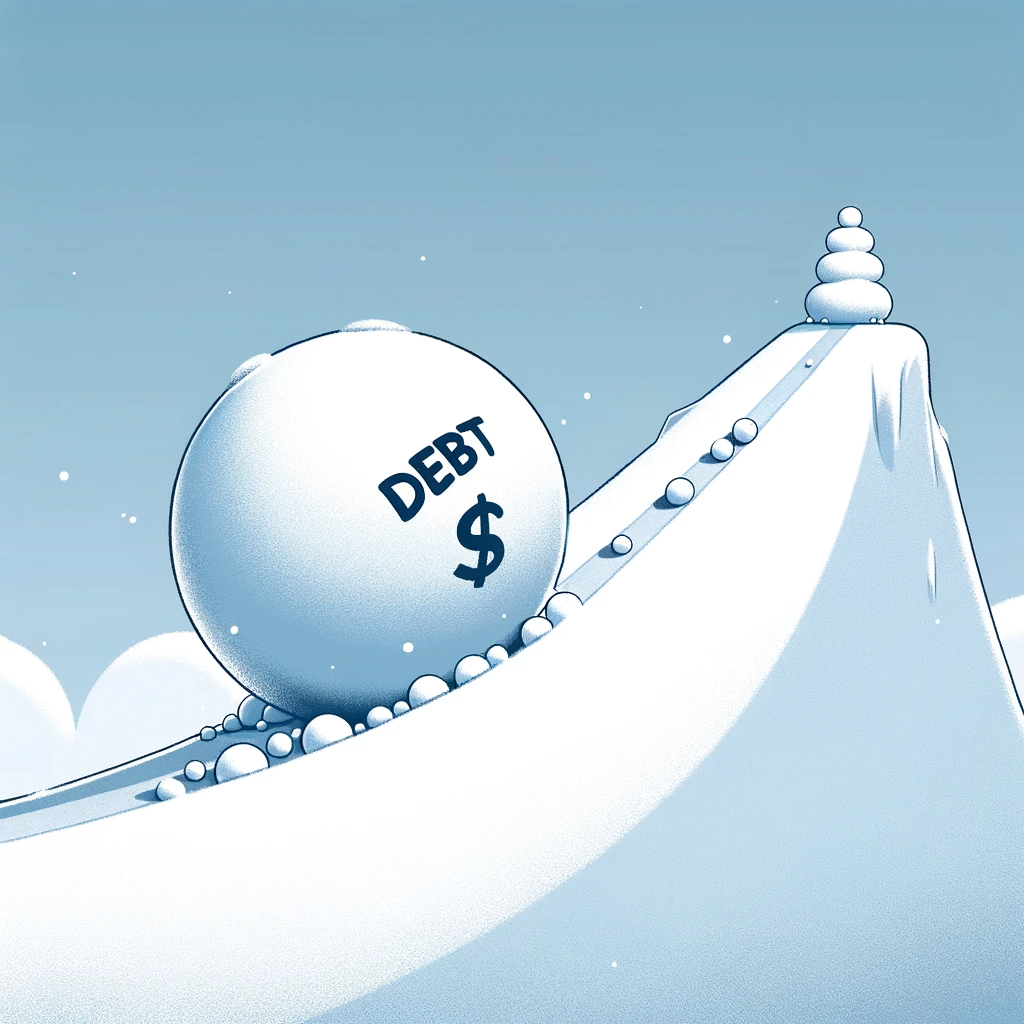What is the Debt Snowball Method?
The Debt Snowball Method is a strategy for paying off debt, where you start with the smallest debts and work up to the largest, ignoring interest rates.
As you pay off each smaller debt, you redirect the funds you were using for those payments to the next larger debt, creating a ‘snowball’ effect that accelerates as you go.
This approach can offer psychological wins, providing motivation to continue paying down debt as you see individual balances disappear.
The debt snowball method was popularized by personal finance expert Dave Ramsey, but has been used by consumers for many years to methodically reduce and eliminate debt.
💡Read More: How to Refinance a Personal Loan: 7 Easy Steps
Important Note:
While the Debt Snowball method offers psychological benefits by focusing on small, quick wins, it’s not the most cost-effective strategy due to potentially higher interest costs. It prioritizes smaller debts over high-interest ones. For those seeking to minimize interest, methods like the Debt Avalanche might be more financially efficient, despite the Debt Snowball’s motivational advantages.How the Debt Snowball Method Works in Five Easy Steps:
- List Your Debts from Smallest to Largest Balance: Begin by making a list of every debt you owe, from the smallest balance to the largest. Don’t worry about the interest rates or the minimum payments at this stage; just focus on the balance amounts.
- Prioritize the Smallest Debt: Make the minimum payment on all your debts each month. However, put any extra cash you have towards paying off the debt with the smallest balance first.
- Eliminate and Move On: After you’ve paid off the smallest debt, redirect the money you were using for that payment to the next smallest debt’s minimum payment. This will compound your payments and help you build momentum—much like rolling a snowball grows in size—as you move on to tackle larger debts.
- Repeat the Process: Continue with this method, methodically paying off each debt from the smallest to the largest. Use the payments from cleared debts to increase the payments on the next debt.
- Shift Focus to Savings: Once you’ve cleared all your consumer debts, start channeling the funds you were using for debt payments into your savings and investments. Now’s the time to shift your focus to growing wealth.
Debt Snowball vs Debt Avalanche
| Feature | Debt Snowball Method | Debt Avalanche Method |
|---|---|---|
| Focus | Smallest to largest balance | Highest to lowest interest rate |
| Psychological Benefit | Quick wins for motivation | Less immediate, efficiency-focused |
| Interest Savings | Lower (focus not on interest rates) | Higher (targets high-interest debts first) |
| Repayment Speed | Variable, potentially longer | Often faster due to lower interest accrual |
| Strategy | Extra to smallest debt, minimum on others | Extra to highest interest debt, minimum on others |
| Motivation | High due to early achievements | Requires discipline, long-term focus |
| Financial Efficiency | Lower | Higher |
| Complexity | Simple | Requires understanding of interest rates |
| Adaptability | High | Moderate |
Why Use the Debt Snowball Method?
There are a few key reasons the debt snowball method is effective:
- Early Wins – By focusing first on your smallest debts, you can pay them off quickly. This creates early wins and a sense of momentum to keep going.
- Less Interest Paid – Paying off debts faster means paying less interest overall, compared to only making minimum payments.
- Psychological Boost – As you cross debts off your list, it motivates you to keep attacking the next one. Seeing progress keeps you focused.
- Flexibility – You can tailor which debts to pay first if needed for cash flow. Pay medical bills before student loans, for example.
- Easy to Understand – This method is simple and intuitive. All you need is your debt list. No complex calculations required.
Why Not to Use the Debt Snowball Method?
While the Debt Snowball Method is popular for its psychological benefits and simplicity, it may not be the most efficient or cost-effective strategy for everyone. Here are some reasons why you might choose not to use this method:
- Higher Interest Costs: This method ignores interest rates, which can lead to paying more in interest over time. If you have high-interest debts, you might save money by paying off these more expensive debts first.
- Longer Time to Debt Freedom: Focusing on smaller debts first might prolong the time it takes to pay off larger, high-interest debts, extending your overall debt repayment period.
- Less Optimal for Large Debts: If your largest debts also have the highest interest rates, the snowball method can be less effective, leading to significantly higher interest payments.
- Requires Discipline and Stability: This method relies on having a stable income and the discipline to consistently apply extra payments to debts. It might not be suitable for those with fluctuating incomes.
- Doesn’t Address Spending Habits: The debt snowball method focuses on the repayment of debt but doesn’t directly address the spending habits that may have led to the debt, potentially leading to a cycle of debt accumulation and repayment.
- Alternative Methods May Be More Suitable: Depending on your financial situation, other methods like the Debt Avalanche (focusing on high-interest debts first) or debt consolidation might be more effective in reducing overall debt.
- Not Tailored to Individual Circumstances: Everyone’s financial situation is unique. A one-size-fits-all approach like the snowball method may not be the best fit for individual circumstances, especially for those with a mix of secured and unsecured debts.
- Psychological Factors Vary: While the psychological boost of paying off small debts works for some, others may find more motivation in tackling high-interest debts or larger balances first.



